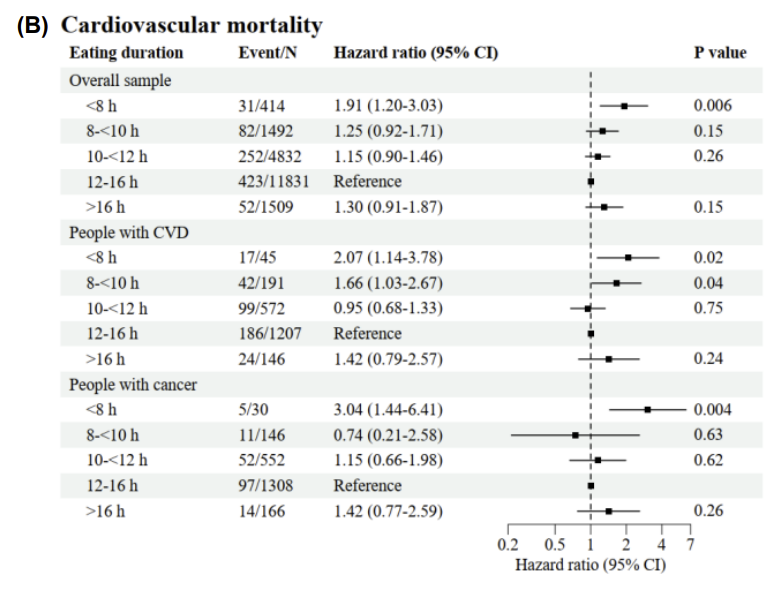This poster has been making headlines lately due to its subject and conclusions. Specifically, I'm interested in understanding how the hazard ratios are being calculated in this table:

For example, let's take the "Overall sample" example. The reference group "12-16 h" has 423 events and a sample of 11831, for group "<8 h" they have 31 events and N of 414. To calculate the hazard ratio of group "<8 h" I figured it'd just be the hazard of that group divided by the hazard of the reference group:
(31/414) / (423/11831)
However this would equal 2.09 not 1.91 as referenced. Could someone explain what is being shown / calculated and how they are getting to 1.91? (Or provide code that would recreate these hazard values given the sample.)
